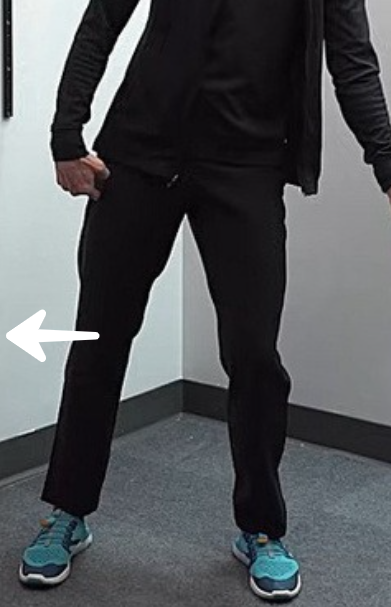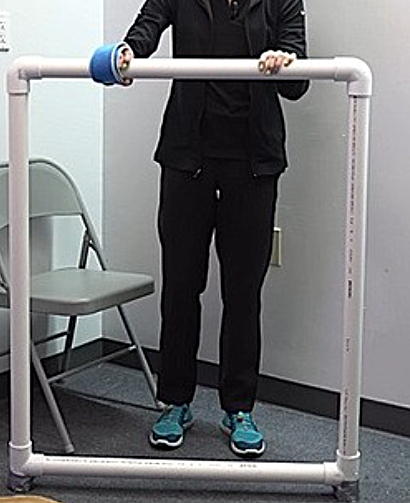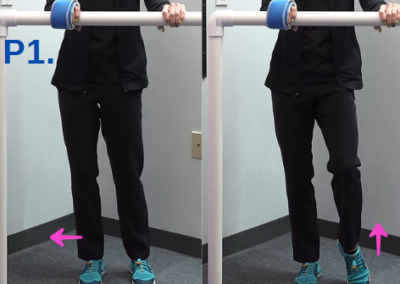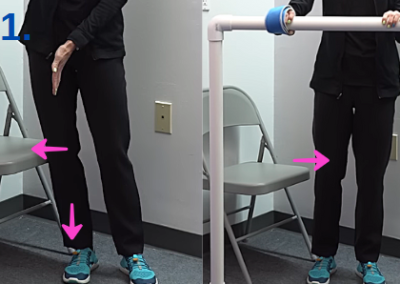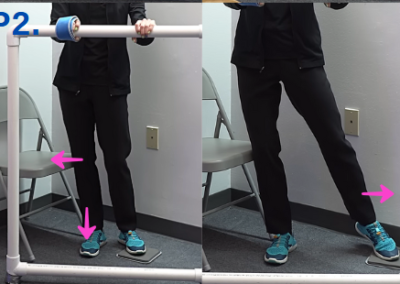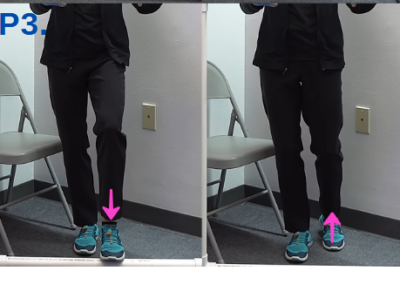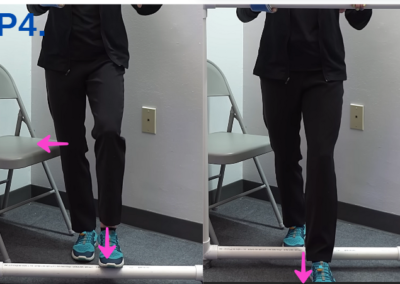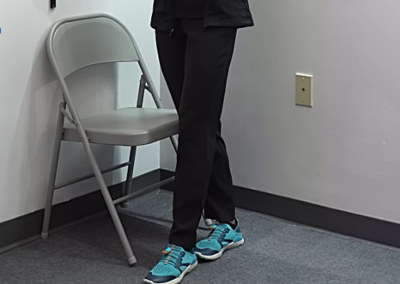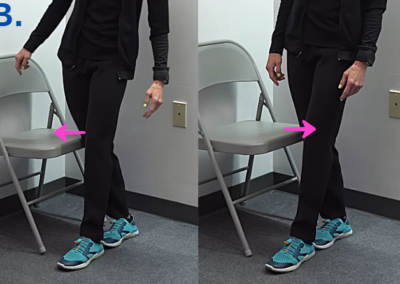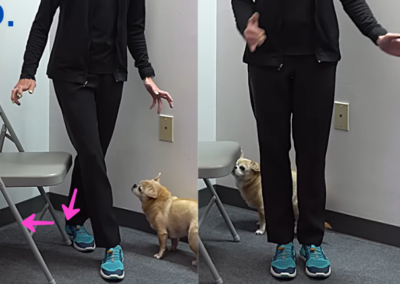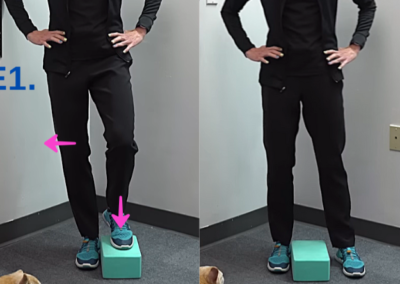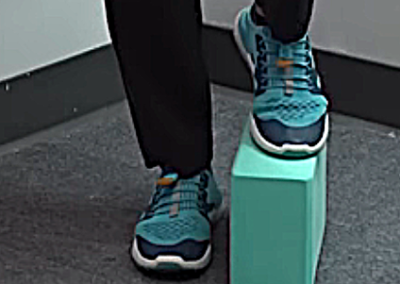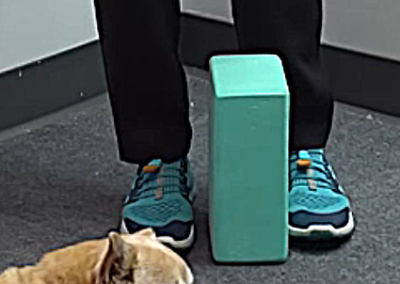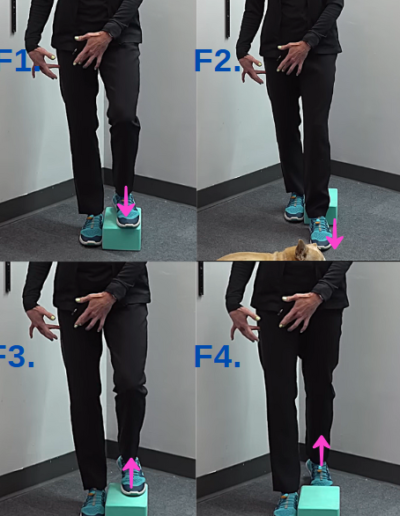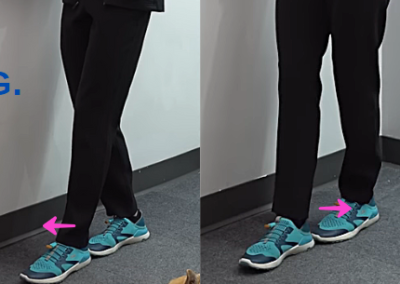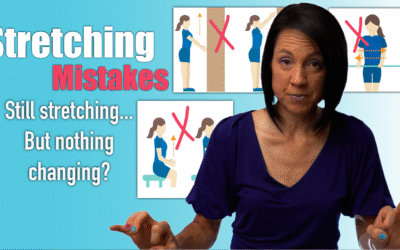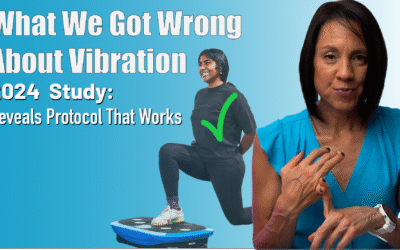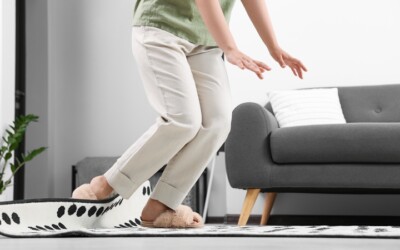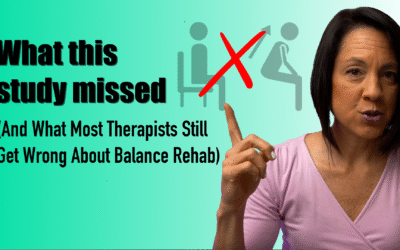Reclaim Your Stride: Fixing Abducted Gait After Stroke
Recovering from a neurological injury can affect your walking pattern, one of which is the “abducted leg walking pattern.”
In this post, we’ll cover what it is, its causes, and how to improve your walking at home. Whether you’re new to recovery or have been using an assistive device, this guide provides practical exercises to help you regain confidence and independence.
What is an Abducted Leg Walking Pattern?
An abducted leg walking pattern occurs when a person’s leg is positioned away from their body’s midline—essentially, the leg is pushed out to the side while walking.
A common sign of this pattern is the inability to keep the affected leg close to the body’s center, which can result in the leg being further out to the side than usual.
Signs of an Abducted Leg Walking Pattern:
✅ Wrist pain on the non-affected side
✅ Noticeable footstep or stomping sound on the non-affected side
✅ Use of a hemiwalker for support
Causes of the Abducted Leg Walking Pattern
- Spasticity: This is the stiffening of muscles, making movement difficult.
- Abnormal synergy patterns: The muscles may not work together properly, causing uncoordinated movements.
- Inability to dissociate: This refers to the difficulty of moving one part of the body independently of another.
- Weakness: Lack of strength, especially in the affected leg, can make it hard to bear weight properly.
There are also some unique causes that can lead to this issue:
- Loss of orientation to midline: The brain may lose the ability to recognize the body’s center line, affecting how the legs move.
- Inability to coordinate lateral and anterior weight shifts: Shifting weight from side to side or front to back can be challenging, leading to an abducted leg position.
If you’re ready to work on improving your walking pattern, there are exercises you can do right at home using simple tools.
For instance, PVC pipes from a hardware store like Home Depot can be used to create a support frame. Here’s how you can get started.
Materials:
-
PVC pipes (1 and 1/2 inch thickness)
-
The pipes should be chest height and wider than shoulder-width apart
Progression Exercises:
Progression 1: Weight Shifting and Heel Lifting
- Stand while holding onto anything stable or a PVC pipes for support.
- Shift your weight onto the affected leg.
- Lift the heel of the opposite foot.
- If needed, strap your hand to the pipe for extra stability
Modification for Confidence Building:
- Place your foot one fist away from a sturdy chair or object.
- Lean into the chair while keeping your belly button directly over the affected leg.
- Return to original position.
Progression 2: Sliding and Stepping with Support
- Hold onto the PVC frame for stability.
- Shift your weight onto the affected leg.
- Lift your heel.
- Slide your foot outward using a furniture slider.
Progression 3: Step and Hold with Support
- Hold onto the PVC pipes for balance.
- Shift your weight over your foot (avoid locking your knee).
- Lift your heel.
- Step onto the front of the PVC pipe.
-
Step back down.
Progression 4: Incorporating Anterior Weight Shift
- Shift your weight forward.
- Step onto the PVC pipe with your affected foot.
- Step over the pipe.
- Step back to the starting position.
Exercises for Those Walking Without an Assistive Device
A. Weight Shift and Toe Control
- Sit in a chair.
- Shift your weight to the affected leg.
- Keep your big toe down (don’t let it lift).
- Step your foot across your other foot in a straight line.
- Hold the position for as long as you can.
B. Hover Exercise: step in line
- Stand with your foot slightly away from a chair.
- Step across your other foot in a straight line.
- Hover near the chair without touching it for support.
- Step back.
C: Hover Exercise – Step Across
- Position your foot slightly away from the chair.
- Shift your weight to the affected leg.
- Step across your midline with the opposite foot.
- Hover toward the chair without touching it.
- Step back to the starting position.
D. Stepping Strategy for Fall Prevention
How the body responds to imbalance:
1️⃣ First, we use our legs to regain balance.
2️⃣ If the imbalance is too great, we use a stepping strategy to prevent a fall.
Exercise:
- Stand with your foot positioned slightly away from a sturdy chair.
- Shift your weight and step across behind the other leg (similar to a curtsy squat).
- Step back to your original position.
Advanced Drills Using a Yoga Block
E1: Tapping the Block
- Shift your weight onto the affected leg.
- Tap the yoga block with your foot.
- Step back down.
- Progression: Flip the yoga block to a taller position and repeat.
Progression 1: Stepping Over the Block
- Stand with the affected leg next to the yoga block.
- Step onto the block.
- Step over the block.
- Step back to the starting position.
Progression 2: Flip the Block
- Stand with the affected leg next to the yoga block.
- Step onto the block.
- Step over the block.
- Step back to the starting position.
Advanced Balance & Walking Progressions:
F. Step Over in Tandem
- Stand with your involved leg next to a yoga block.
- Step up onto the block with your involved leg.
- Step over the block with your other leg.
- Step back onto the block with the opposite foot.
- Return to the starting position by stepping down.
G. Tandem Walking Drill
- Stand heel-to-toe, with one foot placed directly in front of the other.
- Focus on shifting your weight laterally (side to side) and anteriorly (forward).
- Try walking forward and backward in this heel-to-toe position.
Conclusion
Abnormal gait patterns, such as an abducted leg gait, are common challenges faced by stroke survivors. By focusing on strengthening the hip abductors, engaging in consistent gait training, and utilizing assistive devices appropriately, individuals can work towards improving mobility and quality of life. It’s essential to collaborate with healthcare professionals to develop a personalized rehabilitation plan, ensuring that exercises and strategies are tailored to individual needs and progress is regularly assessed.
Consistent practice of lateral and anterior weight shifts is essential for enhancing balance and mobility. Regular engagement in these exercises builds strength and boosts confidence. Acknowledge that even the smallest steps signify meaningful progress.
Articles you might be interested in
How Short Bursts of Exercise Boost Brain Healing
HIIT for Stroke Recovery Boost brain rewiring, improve movement, and speed recovery with short bursts of exercise. https://youtu.be/4SgXN2uRX8g If you’ve been on your stroke recovery journey for a while, you’ve probably heard the word neuroplasticity. Neuroplasticity...
Stretching Spastic Muscles: 8 Mistakes to Avoid
8 Common Stretching Mistakes in Stroke Recovery Why Your Stretching Might Be Making Spasticity Worse https://youtu.be/bBsM34HROYY If you’re dealing with spasticity after a neurologic injury, stretching might not be as straightforward as it seems. In fact, doing it the...
New Study: Vibration Plates Boost Balance After Stroke
It Just Vibrates… So Why Are Stroke Survivors Getting Better? The Truth Behind the Research https://youtu.be/GZgGsMjEgJQ When vibration plates first became popular, they reminded many of us of those old 1980s machines that promised to "shake" the fat away. Naturally,...
Walking “Tips” that Sabotage Post-Stroke Progress
Recovering from Stroke? Don’t Let These 7 Walking Mistakes Set You Back Better Walking Starts by Avoiding These Mistakes https://youtu.be/_nkjHLdOeLc Recovering your walking ability after a stroke is an incredible accomplishment. You’ve put in the work. Strengthening...
The Hidden Reason Your Walking Feels Off After Stroke Rehab
The Missing Link in Stroke Rehab: Why Strength Isn’t Enough How Plyometric Exercises Can Improve Your Post-Stroke Walking https://youtu.be/0xzcgTifCiM Recovering from a stroke is a journey that takes patience, effort, and persistence. Maybe you’ve been faithfully...
Struggling with Shoulder Pain After a Stroke? Here’s What Works
Why Does My Shoulder Hurt After a Stroke?Understanding the 6 Most Common Causes and What You Can Actually Do About Them Let’s be real — if you’re recovering from a stroke and your shoulder still hurts, it can feel really defeating. Especially if you’ve been doing “all...
Still Feeling Weak After Stroke? This Might Be Why
Doing the exercises… but still not getting stronger?You’re walking. You’re moving. Maybe even getting stronger.But everything still feels hard. Like walking across a room takes full concentration. Or standing up while talking feels like solving rocket science....
Stroke Recovery: Spasticity vs. Adaptive Shortening vs. Contracture
Stroke Recovery: Spasticity vs. Adaptive Shortening vs. Contracture Muscle tightness after stroke is common and can be the greatest barrier to restoring normal arm and leg movement. But not all tightness is the same. To treat it effectively, you need to understand...
Why Eccentric Control Might Be the Missing Link in Your Stroke Recovery
Why Eccentric Control Might Be the Missing Link in Your Stroke Recovery After a stroke, movement rarely returns the way we’d like. Instead of smooth, controlled motion, you get stiffness... or those annoying synergy patterns—where every muscle seems to fire at once....
Why Plyometrics Matter After Stroke (Even if They Sound Scary)
Why Plyometrics Matter After Stroke (Even if They Sound Scary) Let’s start with the obvious: The word "plyometrics" sounds like something reserved for athletes, not stroke survivors.But stay with me—because if you’re in the later stages of recovery, this could be the...


